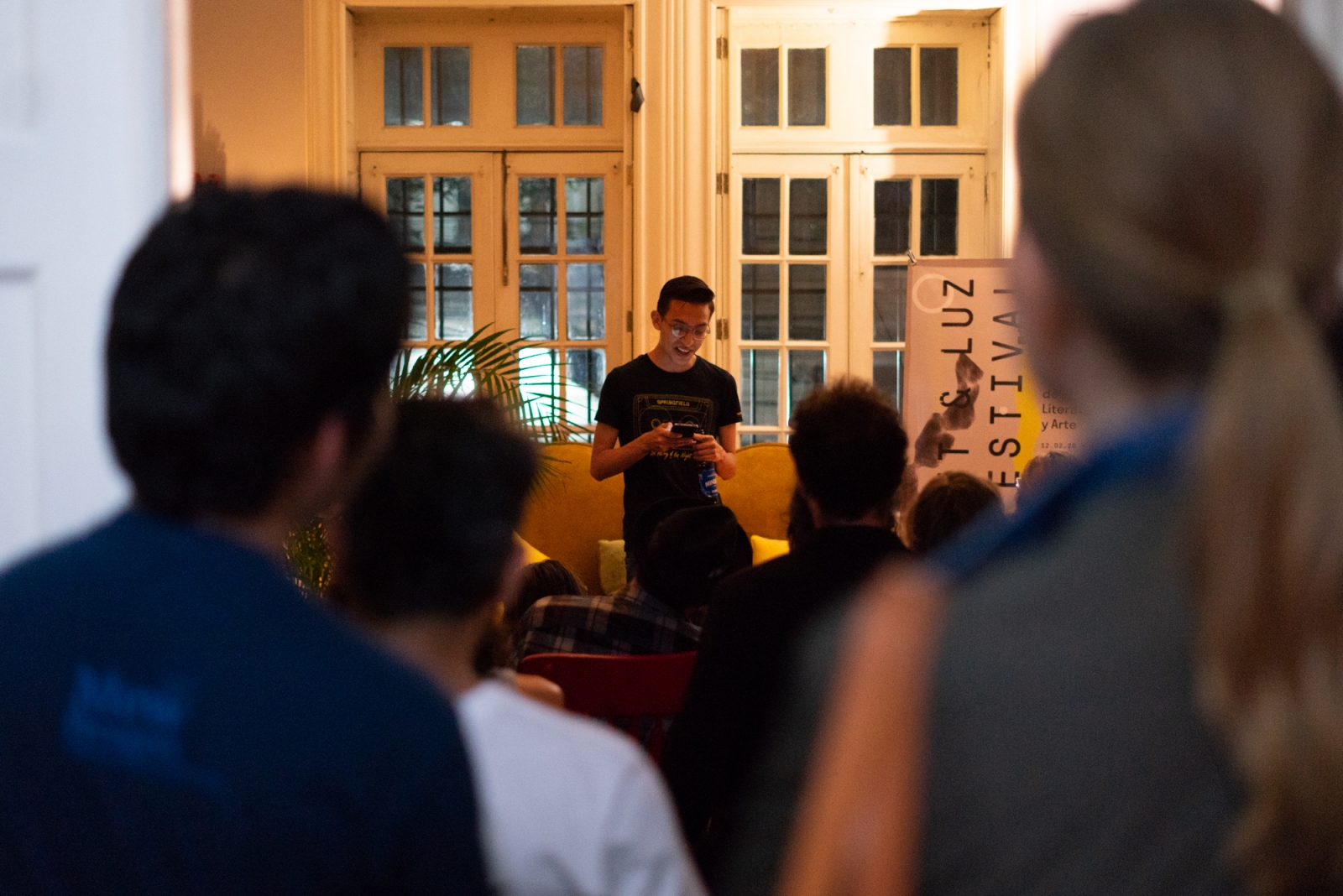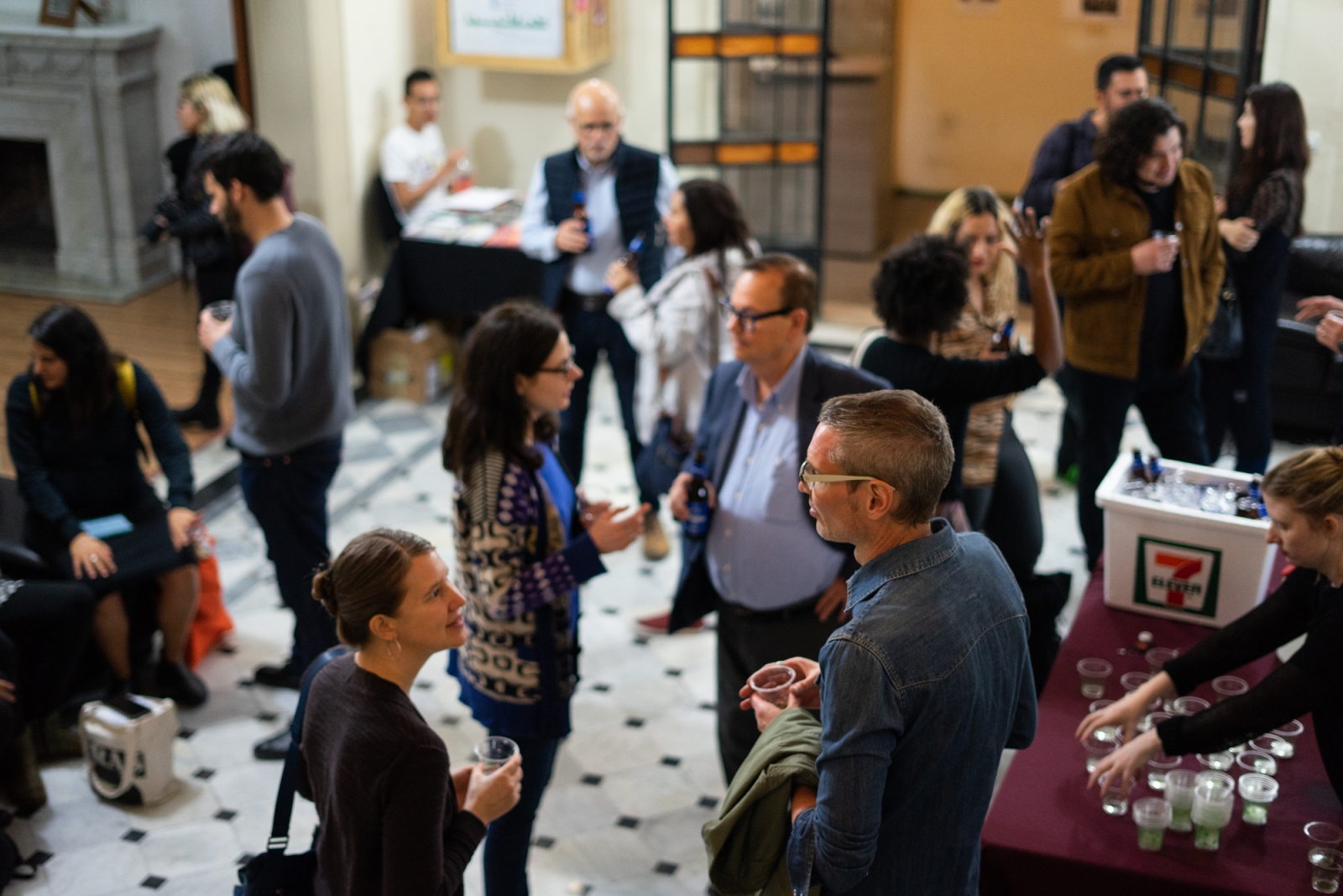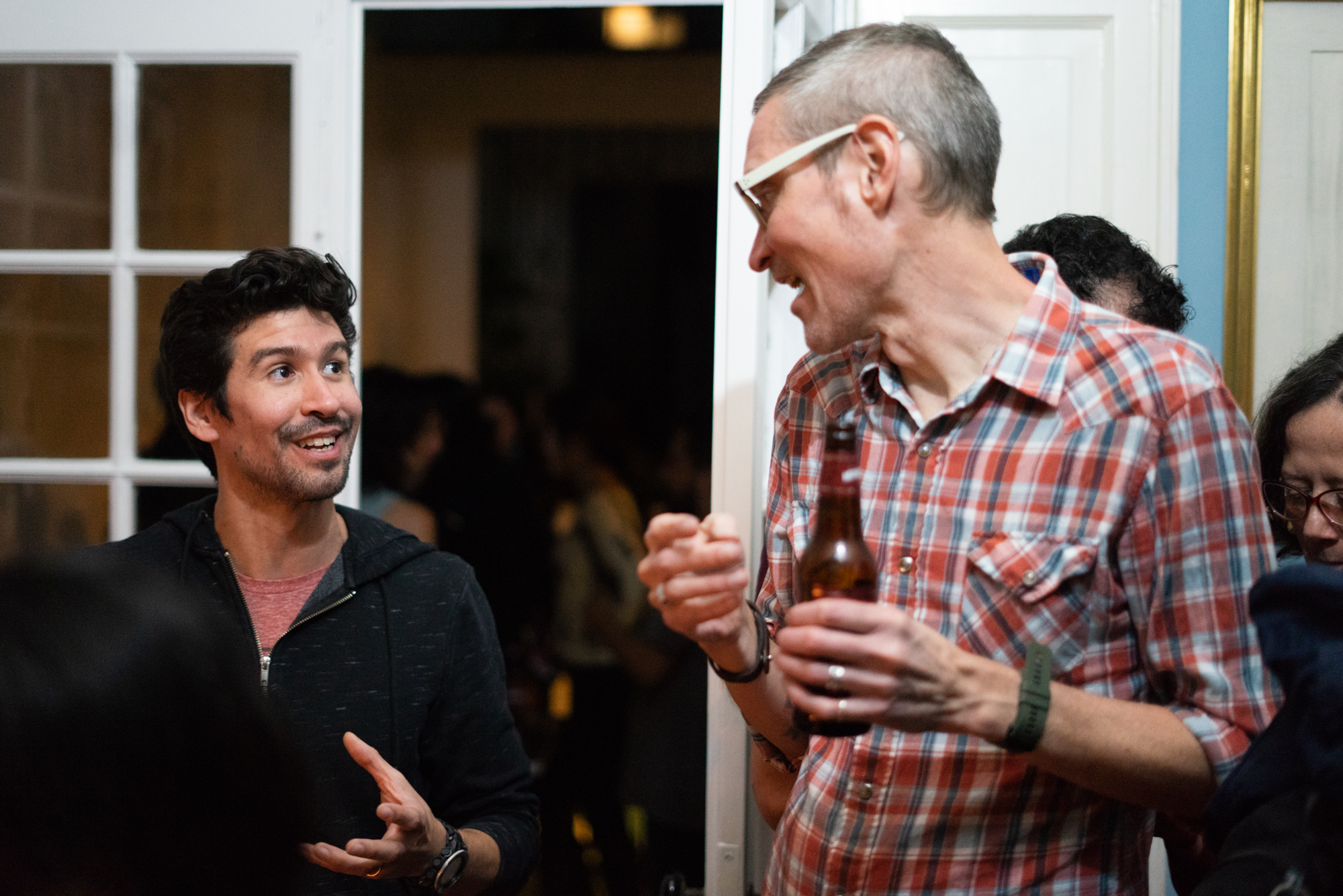Last Friday night, in the waning hours of Valentine’s Day, a group of Chicagoans trudged through the rain toward a home in Roma, Mexico City.
At a metal door, a woman in red invited the group inside. The storm had cut power to the house, so the crowd followed a trail of candles into a living room, where other attendees were getting comfortable: Some shared seats, others took off their shoes, and still others pulled out notebooks and pens.
There, in the home of Mexican poet Carla Faesler, a night of readings and music anchored the second leg of the sixth annual Lit & Luz, a two-part literary fest developed by Chicago-based Make Literary Productions in collaboration with artists from Mexico City. Last October, the group mounted the first part of the festival in Chicago before resuming the festivities in Mexico last weekend.
“These people getting together is really an extraterrestrial thing,” Faelser said. “You erase these ideas of patriotism or nationalism or territories of language.”
Sarah Dodson sees Lit & Luz as a global extension of Make’s eponymous literary magazine, which she co-founded in Chicago in 2004 to bridge the city’s disparate literary communities.
“You could see there were certain universities where the writers were all working together and having events, then there were the slam poets over here, then there was another group of poets who liked certain publishers in this corner,” Dodson said. “What we saw were different literary communities spread out geographically and by certain interests.”
Lit & Luz expands upon Make‘s mission, bringing together transnational artists over the course of a single weekend in an attempt to do away with traditional classifications of art, nationality, and place.
“If the festival gave me anything, it was the experience of collaboration, and collaboration between the arts,” said Mexican poet and visual artist Verónica Gerber Bicecci, speaking in Spanish. “If the future of life is in the collaboration between species, then, in the arts, we should leave personal authorship and begin to work more seriously in collaboration.”

When Lit & Luz first came to Mexico City, it was sparsely attended. Who there would care to see Chicago writers they’d never heard of?
But through word of mouth, media coverage, and organic connections between artists, the festival has cultivated a loyal audience in Mexico City. This year’s events, held in homes, cafés, theaters, and cultural centers across the city, were crowded with Mexican writers, artists, and journalists.
For Lit & Luz’s 2020 iteration, artists were asked to explore the theme of movement. In one performance, sound artist Israel Martinez and poet Emily Jungmin Yoon devised a game of telephone, in which a statement was whispered through the rows of an auditorium — one direction in English, the other in Spanish — eventually meeting in the middle. In another, dancer Michel Rodriguez Cintra set choreography to Bicecci’s poetry, exploring the history of migration between the U.S. and Mexico. On a panel, two writers — Eula Biss, from Evanston, and Jazmina Barrera, from Mexico City — discussed the cosmic experience of pregnancy, in which a body growing within a body forms a borderless being.
For the Chicagoans on the lineup who’d lived in Mexico, Lit & Luz proved particularly meaningful. The trip was photojournalist Sebastián Hidalgo’s first time back since his grandfather’s funeral in 2008, an event he says got him started in photography. Cintra, who teaches at Columbia College, hadn’t returned to Mexico since migrating there from Cuba and remembered Mexico fondly as his doorway to Chicago. Artist Yvette Mayorga recalled visiting her family’s home in Jalisco, where photographs and other keepsakes are still stored.

“In every space in the United States, I’m asked, ‘Where are you from?’” said Miguel Jimenez, the community and literary arts coordinator for Lit & Luz, speaking on a panel in Spanish. “I tell them, I’m from Chicago. ‘But where?’ I tell them, I’m from the South Side of Chicago. ‘But from where?’ And so I tell them the name of the neighborhood, Back of the Yards. And still: ‘But from where?’”
That question came up often at Lit & Luz: “Eres de aqui o de alla?”, or “Are you from here or over there?” The blend of nationalities in the audience sparked the conversation over and over: What does it mean to be “Mexican” or “Chicano” or “Gringo?”
“They will never see me as American, so since I was a kid, I sought that connection with other Mexicans — to share experiences as Mexicans but in two different countries,” Jimenez continued.
Later, sitting with Dodson at a taquería in Roma, Hidalgo shared a story echoing the same experience: After seeing Alfonso Cuarón’s Roma at Music Box Theatre in Chicago last year, he watched as members of the audience stepped outside and began to call their mothers, in tears.
“Isn’t it amazing art can do that,” said Dodson, ” if we let it?”




